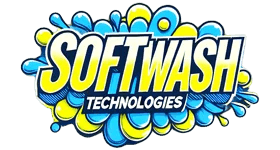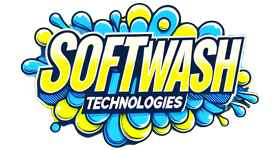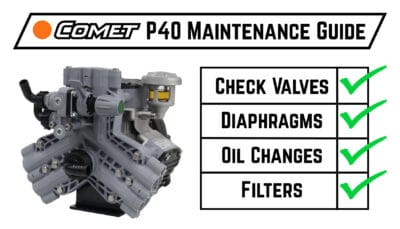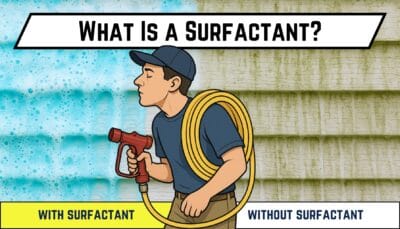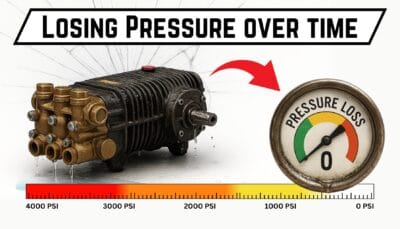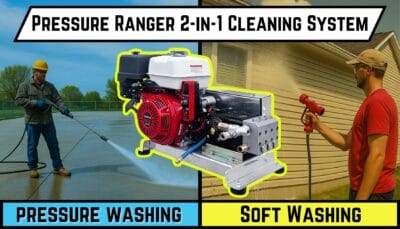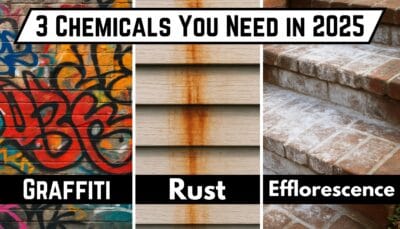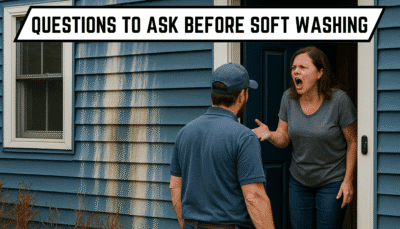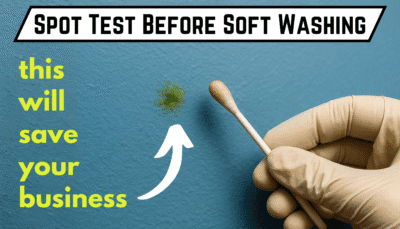Top 7 Softwashing Tips for Beginners
- Posted by: Collin Steele
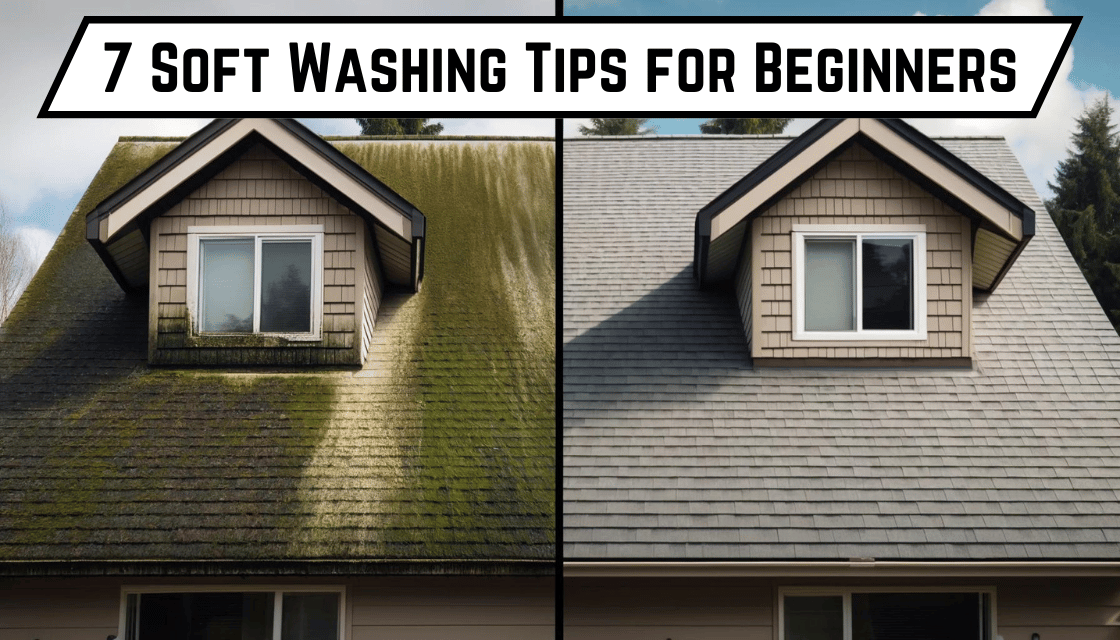
Softwashing tips for beginners are essential for safely and effectively removing grime and algae from delicate surfaces. If you’re new to this cleaning method, mastering a few key tips can significantly enhance your results and ensure safety. Here are the top seven tips to help you get started with softwashing.
1. Understand Softwashing Fundamentals
Softwashing is a cleaning technique that uses low-pressure water combined with chlorine and sometimes a surfactant (soap). This method effectively removes grime, mold, mildew, and algae without damaging surfaces with high pressure. Pressure washers typically run around 3500 psi, which can be too powerful for many applications. Softwashing – on the other hand – is the gentle application of water and chlorine, typically applied around 125 psi. This softwash mix is allowed to sit on a surface for ~20 minutes before being rinsed off with water to carry away dirt and debris. When applying your mix, cover the surface completely and evenly.
For beginners, understanding this difference is one of the most important softwashing tips to avoid surface damage.
2. Equip Yourself with the Right Machine
Choosing the right softwashing machine is critical. There are two main types: 12v sprayers and gas-powered sprayers. Each has its advantages:
- 12v Sprayers: These are quieter and more affordable when you are starting out. They work well for small to medium-sized jobs under 2 stories. 12v sprayers are battery-powered.
- Gas-Powered Sprayers: These offer higher output volumes and are more suited for larger projects 2 stories and up. They are more reliable but require more maintenance and cost more upfront.
Therefore, consider your typical job size, budget, and maintenance capabilities when selecting your equipment.
.
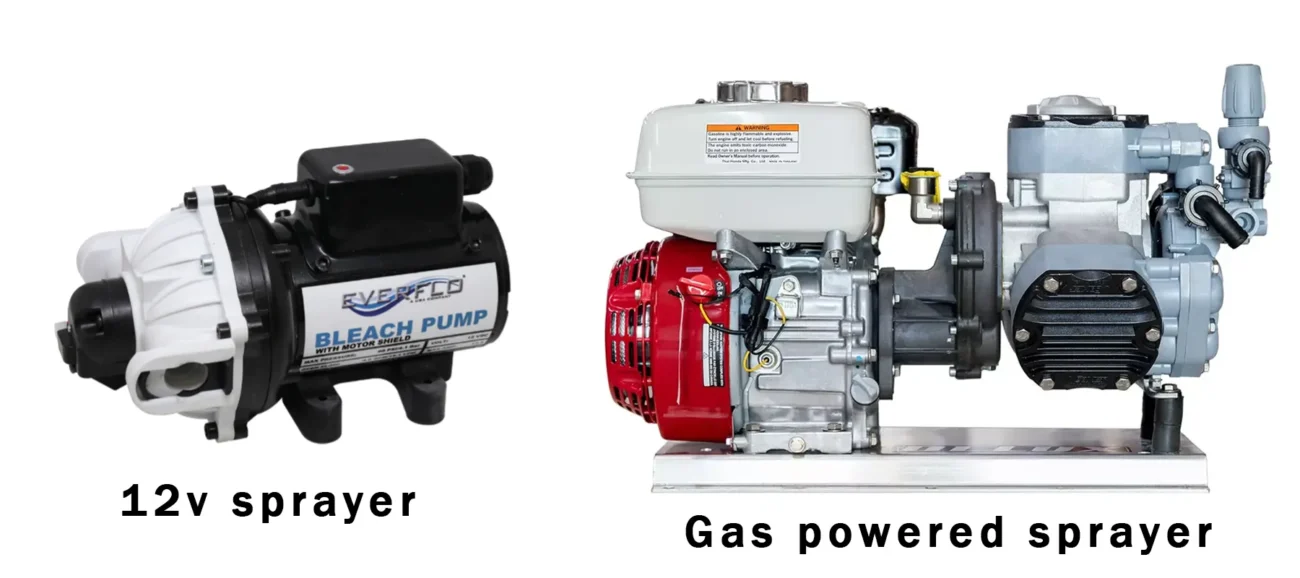
3. Mastering Chlorine
When it comes to softwashing, chlorine is your primary cleaning agent. Understanding its various concentrations and applications is essential:
- 3–4% Chlorine: Ideal for regular maintenance and light cleaning tasks.
- 5–6% Chlorine: Effective for tougher stains and more substantial cleaning jobs.
- 10–12% Chlorine: Best for heavily soiled areas and industrial applications.
Chlorine is cost-effective, but prices can vary. That’s why sourcing from a reliable supplier is crucial. It’s also important to know what strength chlorine you are buying so you mix it in proper proportions. Most chlorine suppliers offer either 6% to 12.5% chlorine concentrate—make sure you know what you are getting.
One of the most valuable softwashing tips for beginners is always double-checking your mix ratios before applying.
4. The Role of Surfactants
Surfactants are soapy additives that are injected into your softwash mix and serve two purposes:
- A surfactant foams up and aerates your softwash mix, allowing it to stick longer to sloped and vertical surfaces instead of running off. This lets the mix work longer and continue cleaning even after initial contact.
- A surfactant typically has a scent additive that masks the smell of chlorine. Customers don’t want their houses to smell like a middle school locker room after a dodgeball tournament. Surfactants are often available in fruit scents like apple, cherry, mango, and lemon.
- Use Surfactants When: Washing residential properties, dealing with vertical surfaces, or treating areas with heavy organic growth.
- Skip Surfactants When: Washing commercial properties, cleaning horizontal surfaces like driveways, or when the surface is lightly soiled.
These softwashing tips around surfactants will help improve both cleaning results and customer satisfaction.

5. Pre-Wet and Protect
Pre-wetting surfaces with plain water before applying your cleaning solution is crucial. This step prevents the chlorine from being absorbed too quickly, especially on porous surfaces like wood, brick, and concrete. If the surface you are cleaning is not porous you can skip this step.
The Mechanism of Pre-Wetting
When you pre-wet a surface, you saturate it with water, filling its pores. This saturation acts as a barrier, keeping the softwash mix on the surface of wood, brick, or other porous materials. By preventing the solution from soaking into the material, we ensure it works effectively on the surface where it’s needed most.
Plant and Animal Safety
Vegetation: Plants are sensitive to chlorine. Pre-wetting the area dilutes any runoff, reducing the risk of yellowing leaves, wilting flowers, and plant death.
Pets and Wildlife: Chlorine can harm animals through contact or ingestion. Pre-wetting dilutes runoff, minimizing the risk to pets and wildlife.
Steps to Protect
- Pre-Wet Surfaces: Thoroughly wet the area with a garden hose or sprayer.
- Cover Plants: If a customer has sensitive flowers or vegetation, use plastic sheeting or tarps to protect any potential overspray or runoff areas.
- Move Furniture: Watch out for any outdoor items that could get chlorine on them such as outdoor furniture, cars, bikes, etc.
- Don’t Kill the Fish: Be aware of any runoff points that connect with bodies of water like a pond or outdoor fish tank. Your client will not be happy if you kill their 30-year-old goldfish.
By following these steps, you ensure a safer, more effective softwashing process, protecting surfaces, plants, and animals.
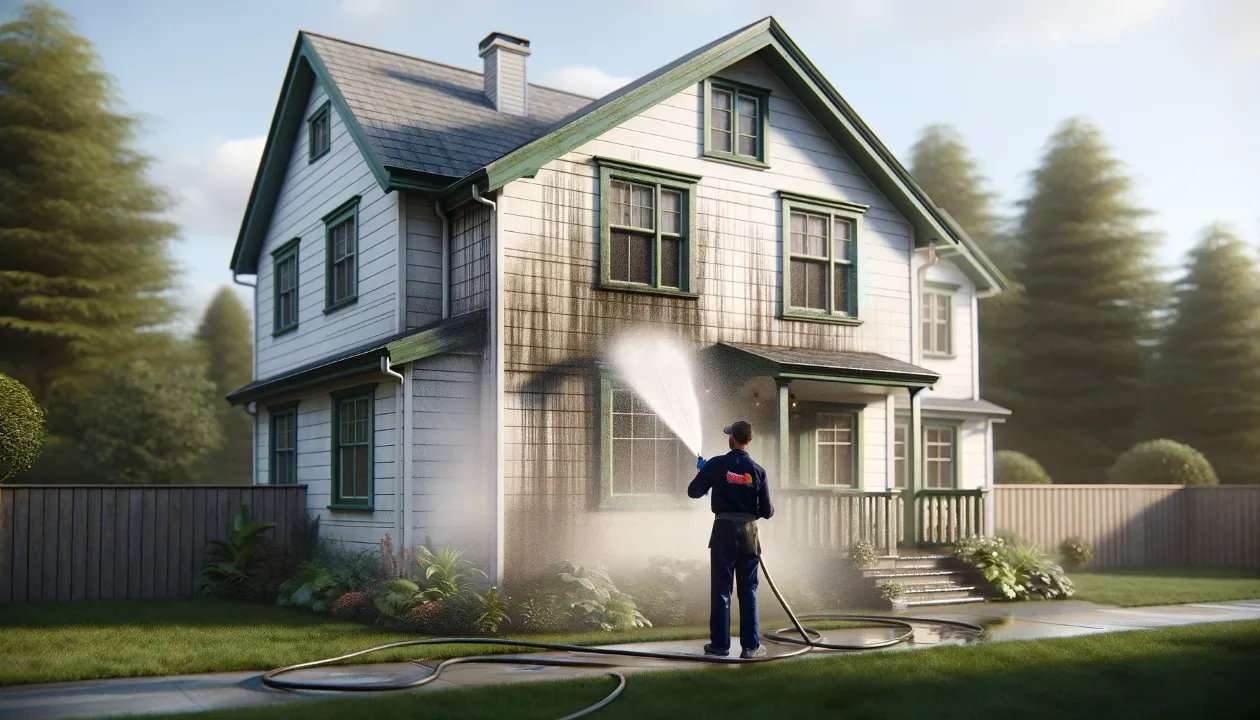
6. Proportioning vs. Batch Mixing
There are two primary methods for mixing your cleaning solutions: proportioning and batch mixing.
- Proportioning (Recommended): Uses a softwash proportioner to mix concentrated chlorine, water, and surfactant automatically as you spray. This method ensures a consistent mixture, saves time, and reduces waste. We offer a top-quality softwash proportioner that simplifies this process.
- Batch Mixing: Involves manually mixing your chlorine and water into one tank. While it offers control over the mixture, it can be time-consuming and less consistent. It should be noted that surfactants need to be used within a certain time frame after batch mixing to maintain the quality of the soft wash mix.
Proportioning is generally more efficient and user-friendly, especially for beginners.
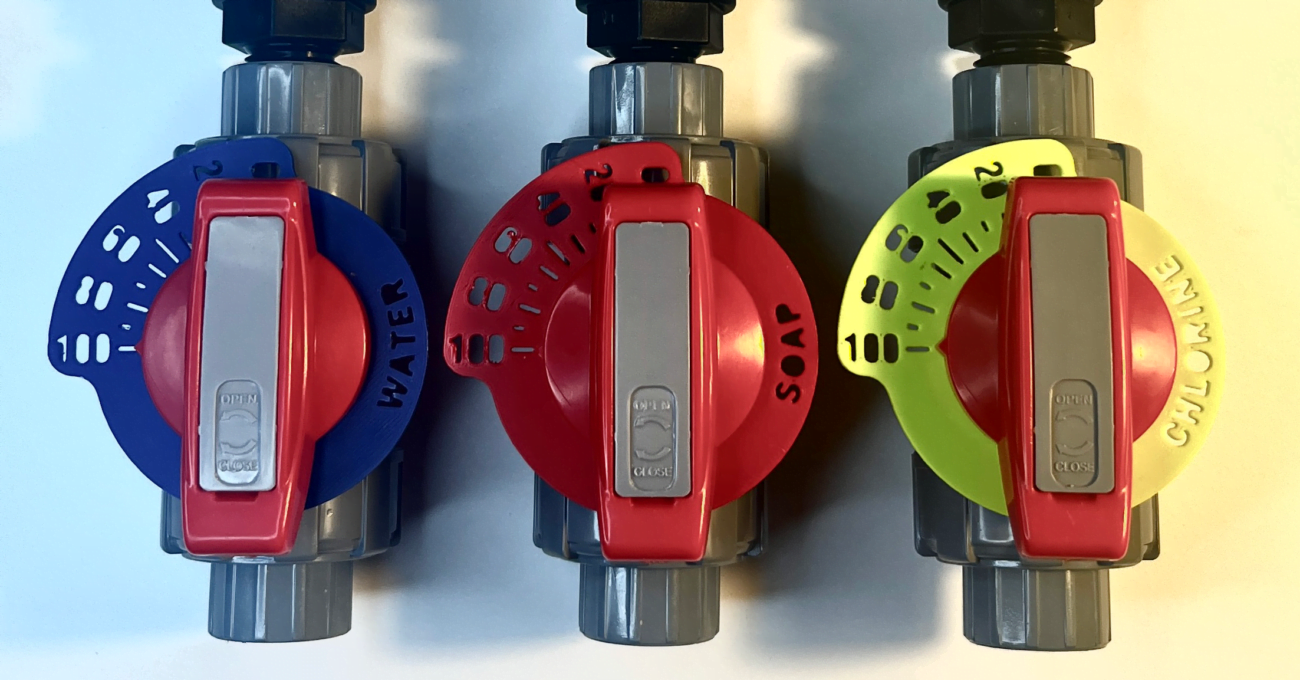
7. The Final Rinse
After allowing the soft wash mix to dwell for 15-20 minutes, it’s time to rinse thoroughly with low-pressure water. If you are using a proportioner, take a picture of your current settings, then shut off both the chlorine and surfactant valves. This ensures only water is making its way through your pump and onto your client’s property. Remember you do have anywhere from 200-300 feet of chem hose so allow time for any changes you make at your proportioner to take effect. It is important to remove all traces of chlorine and surfactant, preventing residue buildup and protecting surfaces. Use gentle, sweeping motions to ensure even rinsing. Always rinse your soft wash pump with JUST WATER after every job to prevent high repair costs due to corrosion.
Conclusion
Soft washing with chlorine, water, and surfactants is a precise and effective method for exterior cleaning. By understanding the fundamentals, investing in the right equipment, mastering your cleaning solutions, and using the right techniques, you can achieve professional results safely and efficiently. Remember, proportioning can make your job easier, and we offer reliable soft wash proportioners to help you get started.
Have questions? Call us at (561) 314-0761 to learn more. We’d be happy to help!
Latest Blog Posts
If you’ve been soft washing for a while, or even if you’re just starting out, you’ve probably heard the word
...